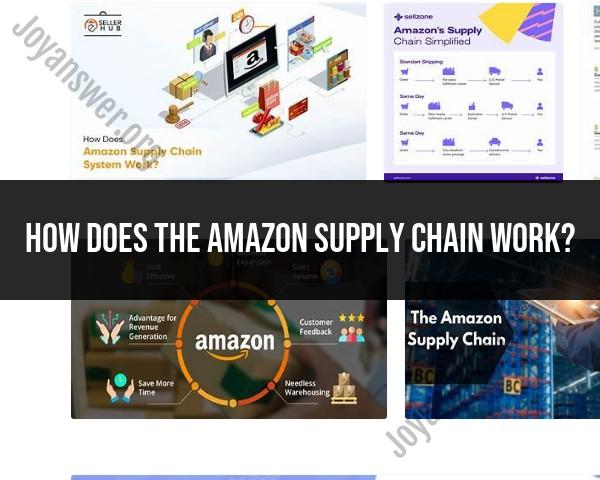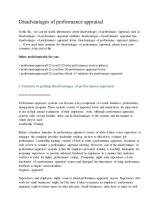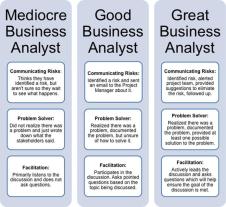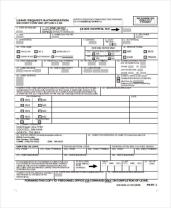How does the Amazon Supply Chain work?
Amazon's supply chain is known for its efficiency and innovation, enabling the company to deliver a vast range of products to customers worldwide. The supply chain process at Amazon involves several key steps:
Product Sourcing and Procurement:
- Amazon sources products from a variety of suppliers, including manufacturers, distributors, and third-party sellers.
- The company uses advanced algorithms and data analytics to optimize its procurement process, ensuring it maintains an extensive product catalog.
Inventory Management:
- Amazon strategically places fulfillment centers (warehouses) worldwide to ensure quick and cost-effective shipping.
- Inventory management is highly automated, with the help of technologies like robotics, sensors, and barcoding. This helps minimize carrying costs and ensures products are readily available for shipment.
Fulfillment Centers:
- Products sourced from suppliers are stored in Amazon's fulfillment centers until they are sold.
- Amazon utilizes advanced automation technologies, such as robots and conveyor systems, to streamline the picking, packing, and shipping processes.
Order Processing:
- When a customer places an order on the Amazon platform, the order is processed using sophisticated software that determines the optimal fulfillment center for the product.
- The order fulfillment process involves picking the items from the shelves, packing them, and preparing them for shipment.
Shipping and Delivery:
- Amazon employs various shipping options, including its own logistics network (Amazon Logistics), traditional carriers (like UPS and FedEx), and partnerships with local delivery services.
- Amazon also offers fast and expedited shipping options such as Amazon Prime, which guarantees quick delivery times for subscribed members.
Last-Mile Delivery:
- To improve delivery speed and reduce costs, Amazon has invested in last-mile delivery solutions, including Amazon Prime vans and a network of delivery drivers.
- The company is also exploring innovative approaches such as drone delivery in certain regions.
Technology and Data Analytics:
- Amazon heavily relies on technology and data analytics to optimize its supply chain. Machine learning algorithms are used to forecast demand, manage inventory levels, and enhance overall operational efficiency.
- The use of data analytics helps Amazon make data-driven decisions, reduce lead times, and improve customer satisfaction.
Returns Management:
- Amazon has a customer-friendly return policy, and its supply chain includes processes for handling returned items efficiently.
- Returned items are often inspected and, if possible, resold as refurbished or open-box products.
Supplier Relationships:
- Amazon maintains strong relationships with its suppliers, negotiating favorable terms and agreements to ensure a steady supply of products.
- The company encourages third-party sellers through programs like Fulfillment by Amazon (FBA), allowing them to leverage Amazon's logistics infrastructure for storage, packing, and shipping.
Continuous Improvement:
- Amazon is known for its commitment to continuous improvement. The company regularly evaluates and updates its supply chain processes, adopting new technologies and strategies to enhance efficiency and customer satisfaction.
It's important to note that Amazon's supply chain is dynamic and subject to ongoing enhancements and changes as the company continues to innovate and adapt to the evolving needs of the e-commerce market.
Sure, here is the English version of the response without images:
The Amazon Supply Chain: An End-to-End Look
Amazon's supply chain is a complex and finely tuned machine, renowned for its efficiency and speed. Here's a breakdown of its key stages:
1. Procurement and Sourcing:
- Sourcing: Amazon negotiates directly with manufacturers or uses platforms like Amazon Global Logistics to source products at competitive prices.
- Inventory Management: Sophisticated algorithms predict demand and optimize inventory levels to minimize storage costs and avoid stockouts.
2. Warehousing and Distribution:
- Fulfillment Network: Amazon has a vast network of fulfillment centers strategically located around the globe to ensure fast delivery.
- Product Processing: Upon arrival, products are labeled, scanned, and sorted for efficient storage and retrieval using advanced robotics and automation systems.
3. Order Fulfillment:
- Picking and Packing: Highly automated systems locate and package orders with minimal human intervention, ensuring accuracy and speed.
- Delivery: Amazon utilizes various methods like its own delivery fleet, partnerships with shipping companies, and Prime Now hubs for same-day delivery in select areas.
4. Returns and Customer Service:
- Returns Management: A streamlined process allows for easy returns and exchanges, contributing to customer satisfaction.
- Customer Support: Amazon provides 24/7 customer support to address any issues or inquiries related to orders and deliveries.
Technological Innovations:
Amazon heavily invests in technology to optimize its supply chain:
- Machine Learning: Algorithms predict demand, optimize inventory levels, and personalize delivery routes.
- Robotics and Automation: Robots handle repetitive tasks like picking and packing, improving accuracy and efficiency.
- Data Analytics: Real-time data insights allow for continuous monitoring and optimization of the entire supply chain.
Challenges and Criticisms:
While highly efficient, Amazon's supply chain faces some challenges and criticisms:
- Labor Practices: Concerns have been raised about working conditions in Amazon's warehouses, with allegations of high pressure, demanding workloads, and potential safety hazards.
- Environmental Impact: The company's reliance on air and ground transportation contributes to carbon emissions, raising concerns about its environmental footprint.
- Supplier Relations: Some critics argue Amazon's dominance gives it leverage to negotiate lower prices from suppliers, potentially putting pressure on their profit margins.
Amazon is constantly working to address these concerns and improve its practices. They have implemented initiatives to improve worker safety, reduce their environmental impact, and build stronger relationships with suppliers.
Overall, Amazon's supply chain is a remarkable feat of engineering and innovation. However, it's important to acknowledge the challenges and criticisms associated with its practices, as the company continues to evolve and shape the future of e-commerce.
I hope this comprehensive overview provides a clear picture of how Amazon's supply chain functions!













